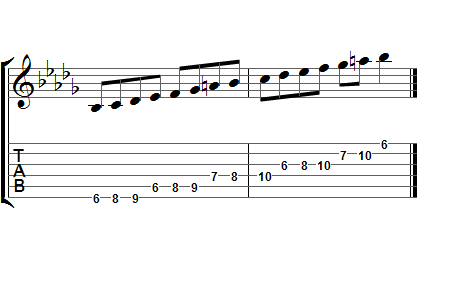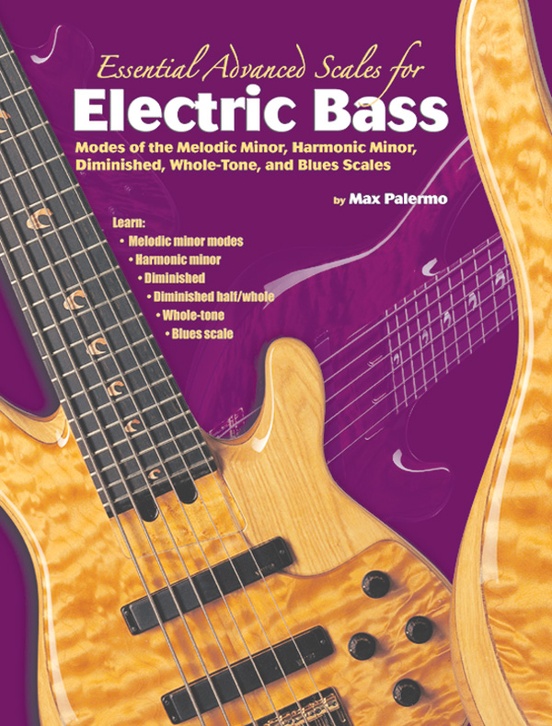
This minor b5 pentatonic is derived from the locrian #2 mode, also known as Aeolian b5. Since this is a pentatonic scale (meaning 5 notes) there will be 5 different positions and shapes, each starting from the next note of the scale. Here are the five basic two note per string shapes across the neck. Standard Shapes & Theory Notes & Interval Formula Pentatonics of Melodic Minor: E Minor b5 Pentatonic.
#MELODIC MINOR SCALES BLUES FULL#
If you want to learn all the other chord types for this scale and some practical chord progressions then consider becoming a Strings of Rage™ Syndicate member where you can download the full length scale study & theory book for this lesson. Intervals: R – b3 – 7 – 9 A Minor Major 9 Chord All Axe-cess Pass – Become a Strings of Rage™ Syndicate Member We know that E major b6 pentatonic will work perfectly over this. For example we can build Am(Maj9) from the A melodic minor scale. We can also use this scale over other chords that are derived from the A melodic minor scale and its modes. Intervals: R – 3 – #5 (b6) – b7 E7#5 Altered Dominant Chord Other Chord Possibilities – Am(Maj9)

An altered dominant chord is essentially a dominant chord with an altered 5th. This is the most standard choice of chord that can be built from the E mixolydian b6 mode. One of the most obvious choices to play this pentatonic scale over would be the dominant 7#5 chord. This lesson will teach you more about extended 7th chords and the theory behind them. The major b6 pentatonic will share some or all of the notes from the chords that can be built from the mixolydian b6 mode. If we’re using E major b6 pentatonic to write a solo or melody, in its most basic form, we know that this scale will work on chords derived from the E mixolydian b6 mode. Pentatonics of Melodic Minor: Chords, Concepts & Theory

We know that E is the fifth degree of A so therefore we are using A melodic minor as our basis or ‘parent’ key. In this example we’re using E major b6 pentatonic which is derived from the mixolydian b6 mode. If we know the intervals of melodic minor we can find out which melodic minor parent key (or scale) we are in. In any melodic minor key, the major b6 pentatonic is derived from the mixolydian b6 mode.
#MELODIC MINOR SCALES BLUES HOW TO#
How to Use The Pentatonics of Melodic Minor: Major b6 Pentatonic

Root Position Referencing The Mixolydian b6 Mode Second Position – E Major b6 Pentatonic Scale Second Position Referencing The Locrian #2 Mode Third Position – E Major b6 Pentatonic Scale Third Position Referencing The Altered Mode Fourth Position – E Major b6 Pentatonic Scale Fourth Position Referencing The Lydian Dorian b2 Mode Fifth Position – E Major b6 Pentatonic Scale Fifth Position Referencing The Lydian Augmented Mode Each modal reference demonstrates the melodic minor mode that the pentatonics are derived from. One showing the standard Pentatonic shape for 7 string guitar (above) and one showing the the additional notes from the corresponding mode reference. Root Position – E Major b6 Pentatonic Scale Mode Referencesįor each position we have demonstrated two diagrams. The major b6 pentatonic is derived from the mixolydian b6 mode of melodic minor.

You could consider each new pentatonic shape a ‘mode’ but this is uncommon practice for pentatonics. Since this is a pentatonic scale (meaning 5 notes) there will be 5 different positions and shapes, each starting from the next note of the scale. Pentatonics of Melodic Minor: E Major b6 Pentatonic.ĥ Positions of the Standard Shapes Notes & Interval Formula


 0 kommentar(er)
0 kommentar(er)
